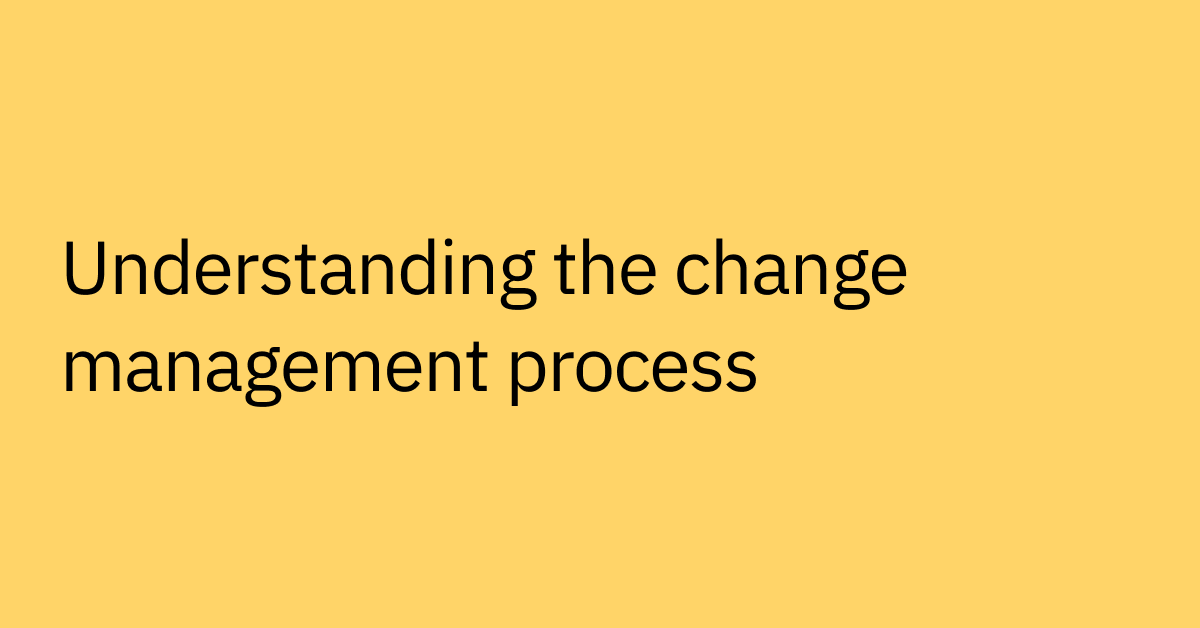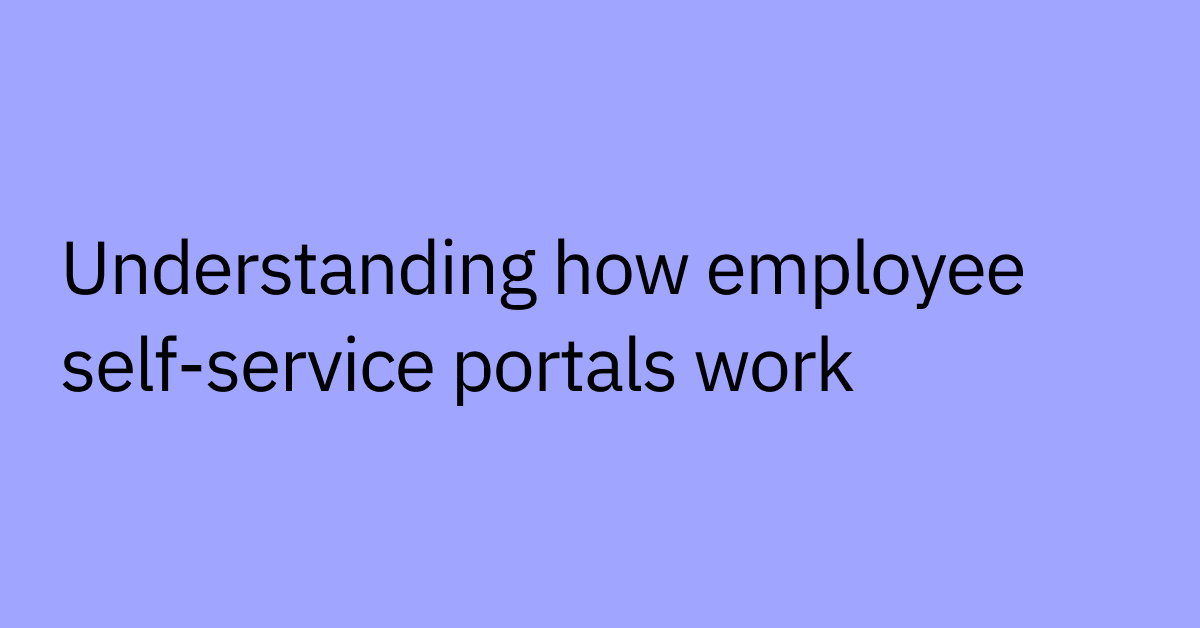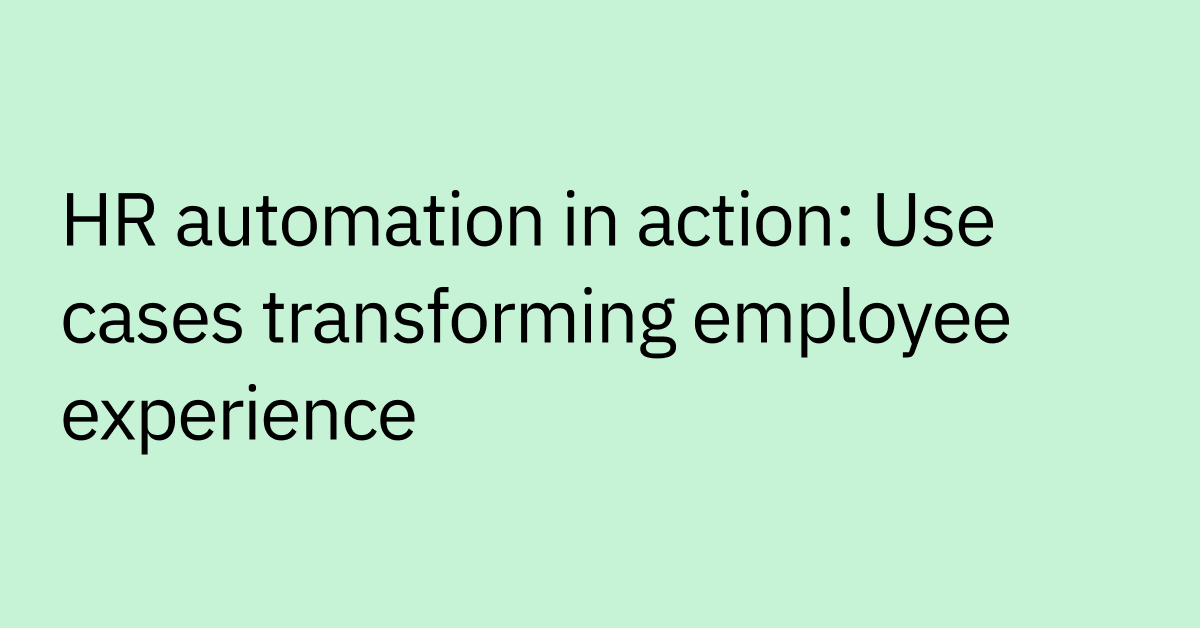Table of contents
Nearly 3 out of 4 organizations experimented with AI technology last year – and chances are, yours was one of them.
You know what’s possible: reducing repetitive tasks, giving employees the answers they need instantly and resolving tickets faster. In fact, 80% of employees are already reporting measurable productivity gains from AI.
But trying AI tools isn’t the same as transforming how work gets done. With hundreds of AI vendors and endless hype, how do you find a solution that delivers real sustainable value — and fast?
This guide breaks down seven leading AI transformation platforms built for the enterprise, so you can compare capabilities and choose the one that fits your goals — whether that’s streamlining IT, scaling HR support, or enabling automation across your org.
At a glance: The best solutions for AI transformation
Solution | Focus Area | Ideal For | Key Differentiator |
Moveworks Platform and Agent Studio | Enterprise-wide automation, employee productivity | Global enterprises seeking comprehensive AI deployment | Agentic AI platform that reasons, plans, and automates |
UiPath | AI-driven process automation | Companies with document-heavy, repetitive workflows | Advanced RPA with AI enhancement |
Automation Anywhere | Intelligent process automation | Enterprises transitioning from traditional RPA | Cloud-native platform with conversational interfaces |
SAP BTP | AI-powered enterprise platform | SAP-centric organizations | Native integration with existing SAP ecosystem |
Microsoft Copilot | Embedded GenAI in productivity tools | Microsoft-first environments | Embedded across Microsoft 365 suite |
Google Workspace | Embedded generative AI for collaboration | Google-native organizations | Built-in AI across email, docs, and meetings |
OpenAI GPT-4 | Generative AI for the enterprise | Organizations building custom AI solutions | Leading-edge language model capabilities |
What is AI transformation?
AI transformation is the strategic integration of artificial intelligence into core business operations, products, and services to improve efficiency, foster innovation, and drive growth.
Instead of simply adding AI tools on top of existing processes, actual transformation involves reimagining how work gets done across your organization.
The main reasons behind enterprise AI adoption include:
- Gain a competitive edge in rapidly evolving markets
- Improve workforce productivity amid talent shortages
- Optimize costs without compromising service quality
- Deliver more personalized employee experiences at scale
Key AI types driving enterprise transformation
The most impactful enterprise AI solutions go far beyond assisting users. Some are capable of executing complex, multi-step processes across departments to unlock new operational efficiencies.
This allows them to find information across disconnected systems, reduce repetitive support requests, and enable strategic initiatives.
When properly integrated, AI can act as an intelligent layer that unifies disparate systems, streamlining operations, and opening the door to powerful automations.
- Generative AI (GenAI) leverages large language models (LLMs) — including multimodal models like GPT-4o and Claude — to drive productivity by generating content, summarizing knowledge, and drafting code or communications at scale.
For example, a marketing team might use generative AI to create personalized email campaigns, while developers use it to write and debug code faster.
- Agentic AI represents the next evolution of enterprise automation — powered by intelligent agents that go beyond generation – to taking action. AI agents are able to handle end-to-end tasks — like submitting PTO requests, addressing certain IT issues, or generating financial reports — without human input. They use AI to understand context, make decisions, and coordinate actions across enterprise systems and applications autonomously.
See how Moveworks' agentic AI platform transforms enterprise operations.
What are barriers to AI transformation?
While the business benefits are clear, many organizations still encounter obstacles when implementing AI transformation initiatives. Common challenges include:
- Poor data quality, outdated information, and inconsistent datasets can make it difficult for AI systems to deliver accurate, actionable results.
- Limited integration bandwidth — especially for connecting ERP systems, APIs, and authentication protocols — can stall implementation before it starts.
- A lack of cross-functional involvement in goal setting and execution can lead to siloed solutions that don’t scale across the enterprise.
- Change management challenges and low user adoption may prevent employees from embracing AI-powered workflows, limiting productivity gains.
- Analytics or visibility gaps — without dashboards to track usage and impact, it's hard to demonstrate value or adjust course effectively.
- When success metrics aren’t clearly defined or aligned with business goals, it becomes difficult to prove impact, sustain momentum, and gain executive support.
Assess what type of AI transformation solution you need
Before evaluating specific platforms, take time to assess your organization's AI readiness and transformation goals. This step is essential to avoid unnecessary complexity and ensure the solution delivers real business value.
- Your AI maturity and internal capabilities are important for tool selection. Teams with strong technical resources may prefer customizable platforms or APIs, while others might prioritize out-of-the-box tools with faster deployment and pre-built integrations.
- Pinpoint high-friction workflows — such as repetitive IT requests, manual HR approvals, or multi-step procurement tasks — where AI automation may be able to drive the most value. These areas often deliver the fastest ROI.
- Consider your organization’s readiness for adoption at scale. Evaluate how quickly the tool needs to provide value, how much change your teams can absorb, and whether you need day-one automation or are prepared to build custom solutions over time.
- Enterprise-specific needs also matter. Look for solutions that support granular permission management, strong security controls, and regulatory compliance — especially if your AI will interact with sensitive data or mission-critical workflows.
Top 8 AI transformation software
Picking the right tool is the biggest step towards unlocking the full potential of AI and ensuring a successful integration into your organization. Here are eight top AI transformation solutions to consider.
1. Moveworks Agentic AI Platform — Enterprise-wide automation
Moveworks delivers an enterprise-grade AI platform for automation and employee support, built to streamline work and processes across departments such as IT, HR, finance, sales, and more.
The platform combines a ready-to-deploy AI Assistant for rapid impact and the Agent Studio, a low-code editor experience that lets you quickly deploy and build custom automations that extend into new workflows.
What sets Moveworks apart is its agentic AI architecture. Its Reasoning Engine
works as the brain behind every AI agent, supercharging its ability to plan, reason, and execute actions on behalf of the user — both accurately and securely.
Key features and capabilities:
- Pre-built enterprise integrations with systems like Slack, Microsoft Teams, ServiceNow, Workday, and more — for rapid deployment.
- Multilingual support in 100+ languages helps global organizations provide consistent experiences regardless of location.
- Proprietary Reasoning Engine uses advanced AI techniques to understand intent, break down complex requests, and plan multi-step actions.
- Execution layer coordinates actions across your tech stack, turning intent into outcomes — all through a single conversational interface.
- No model tuning or scripting required — get value out of the box without needing data scientists or extended custom development.
- Agent Studio provides an all-in-one development platform for discovering, creating, deploying, and tracking custom AI agents that automate business processes.
- AI Agent Marketplace: Access a growing library of ready-to-use plugins and agent templates, so you can get started quickly without building everything from scratch
Ideal use case: Moveworks is built for enterprises seeking end-to-end AI transformation across IT, HR, finance, and beyond. It’s ideal for organizations that need fast time-to-value with pre-built integrations and low-code tools — plus the flexibility to scale and customize over time.
2. UiPath — AI-driven process automation
UiPath combines traditional robotic process automation (RPA) with artificial intelligence to create intelligent automation solutions. The platform works well for automating structured tasks and document-heavy workflows that involve both structured and unstructured data.
This solution provides both low-code and professional development environments, making it accessible to business users while offering advanced capabilities for technical teams. UiPath's Document Understanding AI also helps extract and process information from various document types automatically.
Key features and capabilities:
- AI-powered document processing extracts data from unstructured documents like invoices, contracts, and forms.
- Process mining and discovery tools identify automation opportunities across business operations.
- Computer vision capabilities enable automation of applications that lack traditional API integrations.
- Extensive marketplace offers pre-built automation templates for common business processes.
Ideal use case: UiPath can be especially effective for organizations with high-volume, document-intensive processes in areas like finance, healthcare, and legal services. Companies looking to automate legacy system interactions may find strong value in this platform.
3. Automation Anywhere — Task automation
Automation Anywhere offers a cloud-native intelligent automation platform that combines RPA with AI capabilities. The platform is primarily focused on task automation with minimal coding.
The solution's Automation 360 platform provides a scalable foundation for enterprise-wide automation initiatives. It lets business users interact with automation through natural language and makes the technology more accessible across departments.
Key features and capabilities:
- Cloud-native architecture offers flexible deployment and scaling across global organizations.
- IQ Bot technology processes semi-structured and unstructured data using machine learning.
- Conversational interface allows users to interact with bots through natural language.
- Marketplace provides pre-built automations for common business functions.
Ideal use case: Automation Anywhere can work well for global organizations transitioning from traditional RPA to more intelligent automation approaches. Companies searching for cloud-based deployment with strong analytics may especially appreciate this platform’s capabilities.
4. SAP BTP — AI-powered enterprise platform
The SAP Business Technology Platform (BTP) provides AI and analytics capabilities integrated with the broader SAP ecosystem. The platform lets organizations build intelligent applications and extend existing SAP solutions with artificial intelligence.
SAP BTP's strength lies in its native integration with SAP's enterprise resource planning (ERP) system and other business applications. This tight coupling allows SAP-centric teams to add AI directly to their workflows with minimal custom development — but it’s best suited for organizations already invested in the SAP environments.
Key features and capabilities:
- Embedded AI services integrate directly with SAP applications like SuccessFactors and Ariba.
- Low-code development environment helps business users build intelligent applications.
- Process automation orchestrates workflows across SAP and third-party systems.
- Industry-specific solutions address common challenges in manufacturing, retail, and other sectors.
Ideal use case: SAP BTP is designed for organizations already heavily invested in the SAP ecosystem. Companies looking to enhance existing SAP implementations with AI capabilities while maintaining data consistency will find a lot to love with this solution.
5. Microsoft Copilot — AI copilots in every workflow
Microsoft Copilot is Microsoft's approach to embedding AI assistance throughout its productivity suite. The platform integrates generative AI capabilities directly into applications like Word, Excel, PowerPoint, Teams, and Outlook.
Rather than requiring users to learn new interfaces, Copilot works within Microsoft applications to enhance existing workflows. The system can also understand the context of documents, emails, and meetings to provide relevant assistance and automation.
Key features and capabilities:
- Native integration across Microsoft 365 applications provides familiar user experiences.
- Contextual assistance uses information from emails, documents, and meetings to provide relevant suggestions.
- Content generation and editing help users create and refine documents, presentations, and communications.
- Meeting and collaboration enhancement provides summaries, action items, and follow-up recommendations.
Ideal use case: Microsoft Copilot is ideal for organizations primarily using Microsoft productivity tools. Companies looking to enhance employee productivity within their existing Microsoft environment will likely find immediate value with minimal training requirements.
6. Google Workspace — Embedded generative AI for productivity
Google Workspace brings AI capabilities directly into collaboration and productivity tools, including Gmail, Docs, Sheets, and Meet. The platform uses Google's advanced language models to enhance communication and content creation workflows.
Similar to Microsoft, Google's system also provides writing assistance, data analysis support, and meeting enhancements without requiring users to switch between different applications.
Key features and capabilities:
- Smart writing assistance helps improve communication quality and tone across email and documents.
- Meeting transcription and summaries capture key discussion points and action items automatically.
- Content generation tools help with creating presentations, documents, and marketing materials.
- Cross-application intelligence uses context from multiple Google Workspace tools.
Ideal use case: Google Workspace AI features work best for organizations already using Google's collaboration platform as their primary productivity suite. Companies prioritizing collaboration and communication enhancements will likely find strong value in this fully integrated approach.
7. OpenAI GPT-4 — Generative AI for the enterprise
OpenAI provides enterprise access to GPT-4 and other advanced language models through ChatGPT Enterprise and API services. The platform offers cutting-edge generative AI capabilities for organizations building custom solutions or integrating AI into existing applications.
GPT-4 stands out for its sophisticated language understanding and generation capabilities, and organizations can use it as a foundation to build custom AI applications, enhance customer service, and automate content creation workflows.
Key features and capabilities:
- Advanced language model that provides sophisticated text generation and understanding capabilities.
- API integration allows for custom application development and system integration.
- Custom model training lets organizations fine-tune AI behavior for their specific use cases.
- Multimodal capabilities process both text and image inputs for diverse applications.
Ideal use case: OpenAI's enterprise offerings work best for organizations with technical teams that can build, optimize, and maintain custom AI applications. While GPT-4 unlocks cutting-edge capabilities, it demands strong technical maturity to fine-tune, govern, and maintain enterprise-grade AI applications.
Tips for comparing AI transformation solutions
When evaluating AI transformation platforms, use these factors to guide your decision-making process:
- Look at use case alignment and scalability
Prioritize solutions that handle your immediate needs and scale across departments over time. If long-term automation is a goal, consider whether the platform enables agentic reasoning — not just task automation.
- Integration depth and data compatibility
Evaluate how well the solution connects with your existing tech stack. Look for robust APIs, pre-built connectors, and support for legacy systems and identity providers.
- Implementation complexity and vendor support
Assess your team's current technical capacity and the level of vendor support available during both deployment and ongoing optimization.
- Security, compliance, and governance
This is especially important when AI systems interact with sensitive employee or business data. Ensure the platform offers enterprise-grade controls for access, permissions, data protection, and regulatory compliance.
- Total cost of ownership
Factor in licensing, setup, training, and any required professional services. Weigh these costs against the platform’s speed to value and automation ROI.
- Analytics and stakeholder visibility
Choose a solution that offers dashboards to monitor adoption, performance, and optimization opportunities — making it easier to demonstrate value and course-correct when needed.
Transform your enterprise with Moveworks' agentic AI platform
Choosing the right AI solution isn’t just about automating tasks — it’s about unlocking long-term value across the enterprise.
Moveworks is purpose-built to help your enterprise scale faster, operate smarter, and empower every employee with instant support.
With a foundation in agentic AI, Moveworks accelarates productivity with multi-agent orchestration, advanced automation, and a single AI assistant for all employee needs. It helps centralize support, reduce repetitive work, and drive meaningful outcomes across IT, HR, Finance, Sales, and beyond.
Why leading enterprises choose Moveworks:
- Agentic reasoning engine that is able to understand context and execute complex, multi-step tasks
- Fast time to value with hundreds of prebuilt connectors for platforms like ServiceNow, Workday, Microsoft, and Salesforce
- Built-in multilingual support across 100+ languages helps ensure consistent support experiences for distributed teams
- Enterprise-grade security, permissions, and compliance designed for scale
Whether your goal is to accelerate digital transformation, reduce operational overhead, or deliver proactive support — Moveworks helps make it possible.
Request your personalized demo to see how Moveworks transforms enterprise work with agentic AI.



